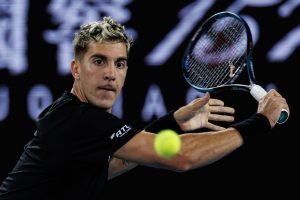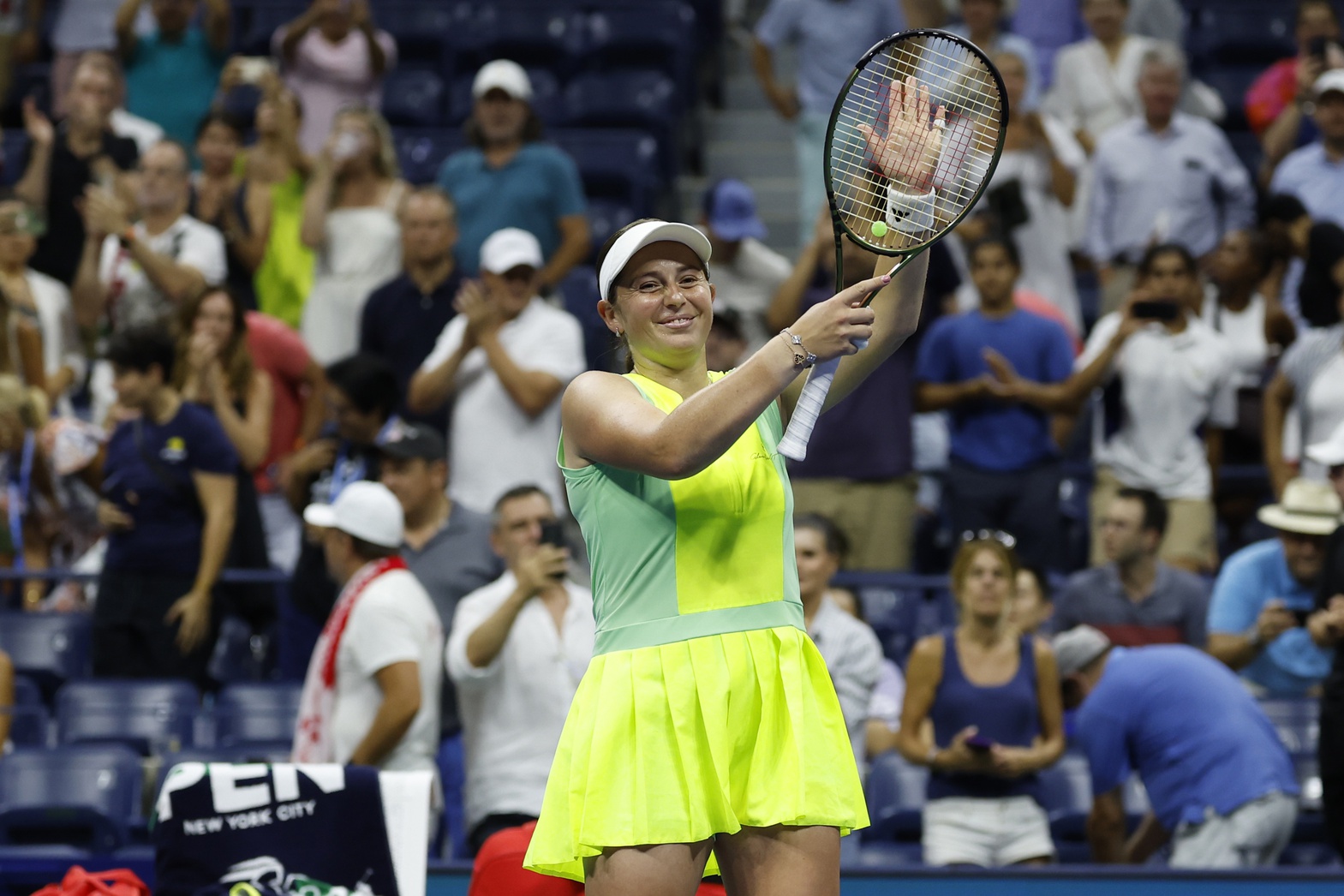If you’re ever in need a pick-me-up, might I suggest watching the highlights of the 2017 French Open final, when 20-year-old, unseeded Jelena Ostapenko, down a set and a break (with a point to go down two breaks), wrenched the match from Simona Halep.
The Latvian steps on court, all smiles, waving to the crowd and then proceeds to play absolutely fearless tennis to take the title. Chalk it up to youthful determination, hubris, or chutzpah, but even when she’s down and seemingly out, she’s still crushing balls and going for her shots. To save break point at 0-3 in the second set, she rips a forehand winner down the line. To seal the match, she rips backhand winner down the line. It’s breathtaking. All told, Ostapenko hit 50 winners and 63 unforced errors that day, and in hindsight, the match was a primer on her particular brand of tennis.
Fast-forward to 2024 and the question remains: is it possible to recapture lightning in a bottle?
Finding balance–from game style to coaching mix
In the seven years since her unexpected French Open title, Ostapenko has amassed a trophy cabinet that would make most pros envious–eight WTA singles titles (Adelaide and Linz added this season) and seven doubles titles (Brisbane added this year)–but her day-in-day-out results have been decidedly mixed. She can be hot one day and cold the next, and she’s yet to bag another Major, despite having the raw materials to make a run.
Ostpenko arrives in Paris ranked World no. 10 and riding a resurgence that started about 18 months ago. She seems to have found stability with her coach Stanislav Khmarsky, who she’s been working with since 2021 (he took a break briefly to coach Marta Kostyuk). Khmarsky is a former coach of ATP player Alexandr Dolgopolov and is engaged to Ostapenko’s regular doubles partner, Ukrainian Lyudmyla Kichenok. By all accounts, he’s a calming presence in her corner, providing steady encouragement as she rides the emotional rollercoaster of each match.
At the start of this season, much was made of Ostapenko’s revelation that her New Year’s resolution was to be more aggressive. When pressed in a post-match interview at the Australian Open, Ostapenko explained that she meant she would lean into her strengths, but be a bit smarter about it. Instead of holding back, she would go for her shots and trust her merciless attacking style to put pressure on her opponents in the deciding moments. That’s translated into more consistency and a higher shot tolerance in rallies. She is playing aggressive as per usual, but she’s become more patient and tactical about when to unleash an out-and-out attack.
Ostapenko’s aggressive game isn’t her only weapon. It’s rare to see her on the dead run, due to her incredible anticipation skills–she seemingly knows where the ball is going before her opponent even strikes it–and her timing is off-the-charts. When you see Ostapenko play in person, the sound of the ball coming off her racquet is exquisite.
When it all comes together it pays off. But where her game does fall short is with her second serve, which is imminently attackable. If Ostapenko is having trouble finding her first serve on the day, a match can go south fast.
If she’s in the right mindset and her game is clicking, she can overpower nearly every player in the draw, but seemingly small distractions have the potential to derail her game. (Much has been made of her misgivings about Hawkeye line calls.) In other words–she needs to be feeling it.
Can Jelena Ostapenko find her way through a tricky French Open draw?
In her first match at Roland Garros, Ostapenko will face World no. 67 Jaqueline Cristian, a proficient clay-courter who had deep runs this year in Charleston and Madrid. It is a tricky opener considering her record at the French: she’s lost in the first round three times since winning the title there in 2017.
Main Photo Credit: Geoff Burke-USA TODAY Sports
Rachel Bucci
Share:
More Posts

Davis Cup Italy vs Australia Best Bet
Davis Cup Malaga semifinals (played on indoor hard courts) Italy – Australia: 23.11.2024 13:00 CEST H2H: 1-1 1st potential matchup: Musetti – Kokkinakis Lorenzo Musetti

Rovereto Challenger Best Bets Including Prizmic vs Maestrelli
Rovereto Challenger quarterfinals Prihodko – Nardi: 22.11.2024 14:30 CEST H2H: first meeting Oleg Prihodko has won four of his last five matches. Last week in

Roger Federer, Serena Williams, Novak Djokovic, Many More Send Tributes to Rafael Nadal on his retirement
In a moment that marked the end of an era, Rafael Nadal officially played his last tennis match on Tuesday at the Davis Cup, bidding

Rafael Nadal’s Career Prize Money Revealed
Rafael Nadal played the final match of his illustrious tennis career at the 2024 Davis Cup Finals, closing the curtain on a journey that captivated


